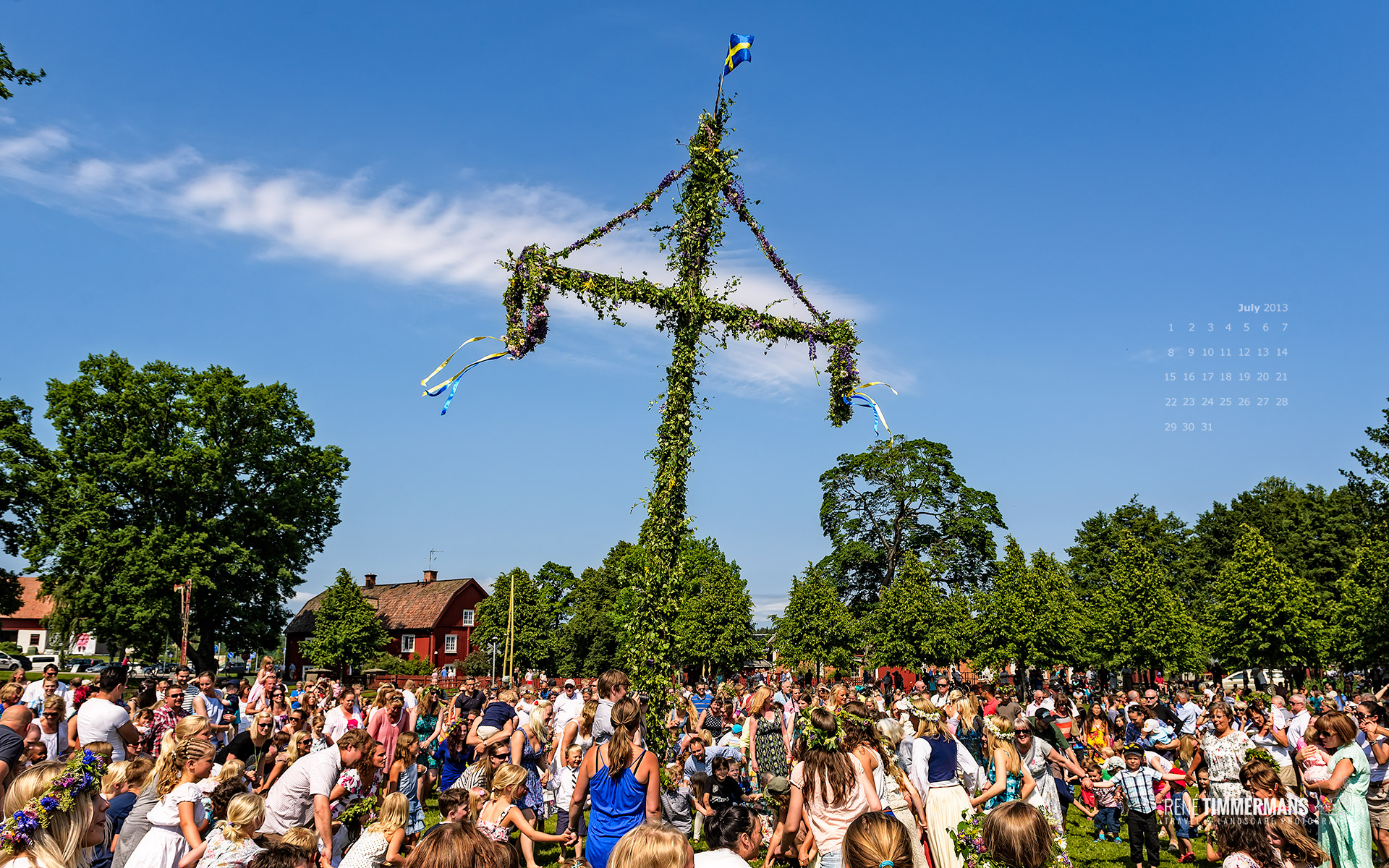
July 2013 wallpaper
It does not get more summery in Sweden than with the celebrations on Midsummer’s evening. The July 2013 wallpaper shows the traditional dancing around the midsummer pole in Mariefred during this year’s midsummer.
Below is an excerpt from Wikipedia on the Swedish Midsummer. It is a great read if you are interested in the history and meaning behind it.
“In modern Sweden, Midsummer’s Eve and Midsummer’s Day (Midsommarafton and Midsommardagen) were formerly celebrated on 23 June and 24 June, but since 1953 the celebration has been moved to the Friday and Saturday between 19 June and 26 June with the main celebrations taking place on Friday. It is one of the most important holidays of the year in Sweden, and probably the most uniquely Swedish in the way it is celebrated. When Sweden got its National day (6 June), discussions were held about making Midsummer the Swedish national day because of the strong civil celebration on this day.
Raising and dancing around a maypole (majstång or midsommarstång) is an activity that attracts families and many others. Before the maypole is raised, greens and flowers are collected and used to cover the entire pole. People dancing around the pole listen to traditional music and sing songs such as “Små grodorna” associated with the holiday. Some wear traditional folk costumes or crowns made of wild springs and wildflowers on their heads. The year’s first potatoes, soused herring and pickled herring, chives, sour cream, beer, snaps and the first strawberries of the season are on the menu. Drinking songs (snapsvisor) are also important at this feast, and many drink heavily.
Because Midsummer was thought to be one of the times of the year when magic was strongest, it was considered a good night to perform rituals to look into the future. Traditionally, young people pick bouquets of seven or nine different flowers and put them under their pillow in the hope of dreaming about their future spouse. In the past it was believed that herbs picked at Midsummer were highly potent, and water from springs could bring good health. Greenery placed over houses and barns were supposed to bring good fortune and health to people and livestock; this old tradition of decorating with greens continues, even though most don’t take it seriously. To decorate with greens was called att maja (to may) and may be the origin of the word majstång, maja coming originally from the month May. Other researchers say the term came from German merchants who raised the maypole in June because the Swedish climate made it impossible to find the necessary greens and flowers in May, and continued to call it a maypole. Today, however, it is most commonly called a “midsommarstång” (literally midsummer pole).
In earlier times, small spires wrapped in greens were erected; this probably predates the maypole tradition, which is believed by many to have come from the continent in the Middle Ages. Others argue that some form of Midsummer pole occurred in Sweden during the pre-Christian times, and was a phallic fertility symbol, meant to impregnate the earth, but as there were no records from those times it cannot be proven, and this idea might just be a modern interpretation of the pole’s form. The earliest historical mention of the maypole in Sweden is from the Middle Ages. Midsummer was, however, linked to an ancient fertility festival which was adapted into St. John’s Day by the church, even though it retained many pagan traditions, as the Swedes were slow to give up the old heathen customs. The connection to fertility is naturally linked to the time of year. Many young people became passionate at Midsummer, and this was accepted, probably because it resulted in more childbirths in March which was a good time for children to be born.”



Recent Comments